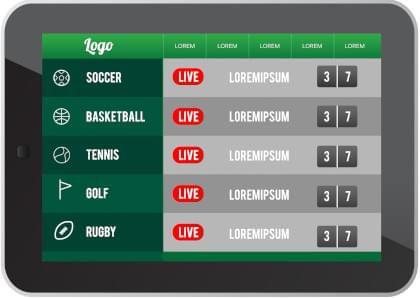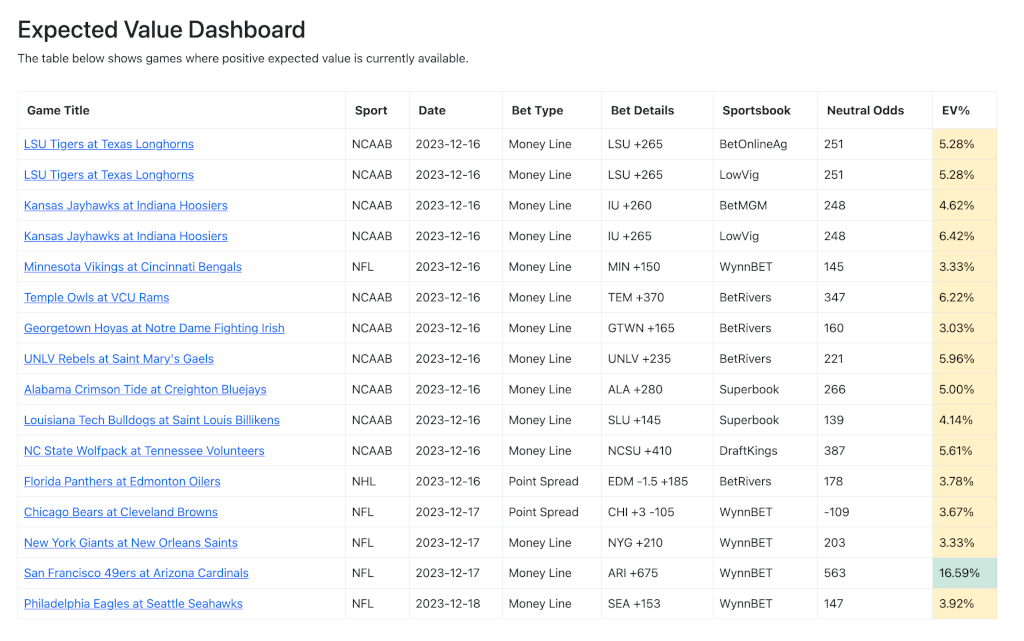When it comes to sports betting, North American football and basketball are heavily driven by point spreads. Baseball and hockey, by comparison, don’t rely on point spreads nearly as much. They still exist in the form of the run line (in baseball) and the puck line (in hockey), but money line bets tend to be more common in these sports. We could get into why point spread betting is so popular in football and basketball, along with the type of advantage it gives to the sportsbooks, but we’ll save that for a future article.
For the purposes of this article, we will be looking at betting strategies for the MLB run line. One strategy we will explore is based on betting favorites and giving up the runs, while the other focuses on betting underdogs and getting the runs. After the strategies have been explained, we will talk about how the Cappers App automatically calculates these results for you in every MLB game, along with 16 other MLB betting systems, and how you can use those results to improve and speed up your MLB handicapping process.
Understanding the MLB Run Line
Before we get into these run-line betting systems, let’s make sure we have a baseline understanding of what the MLB run line is. As I eluded to in the introductory paragraph, the run line is baseball’s version of a point spread. It provides a way for oddsmakers and sports bettors to come closer to equalizing teams when placing wagers. Normally the value of the run line is 1.5 runs, but in some extreme cases, it can be 2.5 runs. For the remainder of this article, we will assume a run line value of 1.5 runs, but I wanted to mention the possibility of a run line of 2.5 just so it doesn’t catch you off guard.
The run line favorite will be giving up 1.5 runs in the game, meaning a run line bet on the favorite requires the team to win by 2 or more runs for the bet to be a winner. This would be written as {Team Name} -1.5. The run line underdog is written as {Team Name} +1.5. These teams can lose by one run and your bet will still be a winner.
The main difference between the baseball run line and a point spread in football or basketball is that in football and basketball, the point spread betting price is locked (usually at -110) and the value of the point spread changes over time. A point spread in either of those sports might open at 2.5, then move to 3, then 3.5, etc; but the price is always -110. The opposite is true for baseball; the run line is locked at 1.5 and the price changes over time. For example, the Dodgers' run line for a game might open at Dodgers -1.5 with a payout of +110, then that payout could move down to +100, then it could move again to -110, but the value of the run line would always be -1.5. The same concept applies to run-line underdogs.
My favorite thing about run-line betting is that I can bet on the stronger team and still get a positive payout from the sportsbook. It’s not uncommon to find a team who is favored at -110 on the money line getting a payout of +150 as a run line favorite. Obviously, the winning criteria go up by one run (because they already need to win by one run just to win the game, now they need to win by two runs), but if your research and calculations show that they are likely to cover this spread, the run line can prove to be very valuable.
Run Line Oddities
Here’s where the MLB run line differs drastically from all other sports. Even the NHL puck line doesn’t behave this way. Just because a team is favored on the money line doesn’t guarantee that they will also be the run-line favorite. I’ve seen countless examples where one MLB team is the money line favorite at -115 and their opponent is the underdog at -105, yet the team who is favored on the money line is actually getting runs on the run line rather than giving them up. I did a triple-take the first time I saw this and still thought it had to be a fluke, but it wasn’t.
This is just another one of those intricacies in baseball betting that you won’t find elsewhere, and it definitely threw a new challenge at me when programming the MLB system results for the Cappers App. Consequently, I had to add this MLB form input to account for these scenarios:

The label of the form field says “Game favorite is Run Line favorite?” The default value for this input is “True” because, in most cases, the game favorite on the money line is also going to be the favorite on the run line, but not always. We’ll talk more about the Cappers App in a bit but I wanted to call out this scenario because it’s so unique to MLB run line betting.
Handicapping Run Line Favorites
Now that we have a baseline understanding of the MLB run line, we can start talking about how to incorporate it into our handicapping process. First, let’s look at handicapping run-line favorites. As I’ve already mentioned, I love run-line favorites because they give me a chance to win a positive payout wager on the team that is already favored in the game. I try to avoid bets with negative payouts whenever possible, so this is right up my alley.
When I’m handicapping MLB run line favorites, I start by looking at the last five games for both teams. First, I calculate the average runs scored and average runs allowed per game for the favorite, then I do the same thing for their opponent. I subtract the underdog’s average runs per game in the last five games from the favorite’s average runs per game in the last five games and save this number. Then, I subtract the favorite’s average runs allowed for the last five games from the underdog’s average runs allowed in the last five games and save this number. Add these two numbers and you have a baseline run differential for the favorite.
As a formula, this would be written:
favRunLineDiff = (homeTeamAvgRunsScoredLast5Games - roadTeamAvgRunsScoredLast5Games) + (roadTeamAvgRunsAllowedLast5Games - homeTeamAvgRunsAllowedLast5Games)






